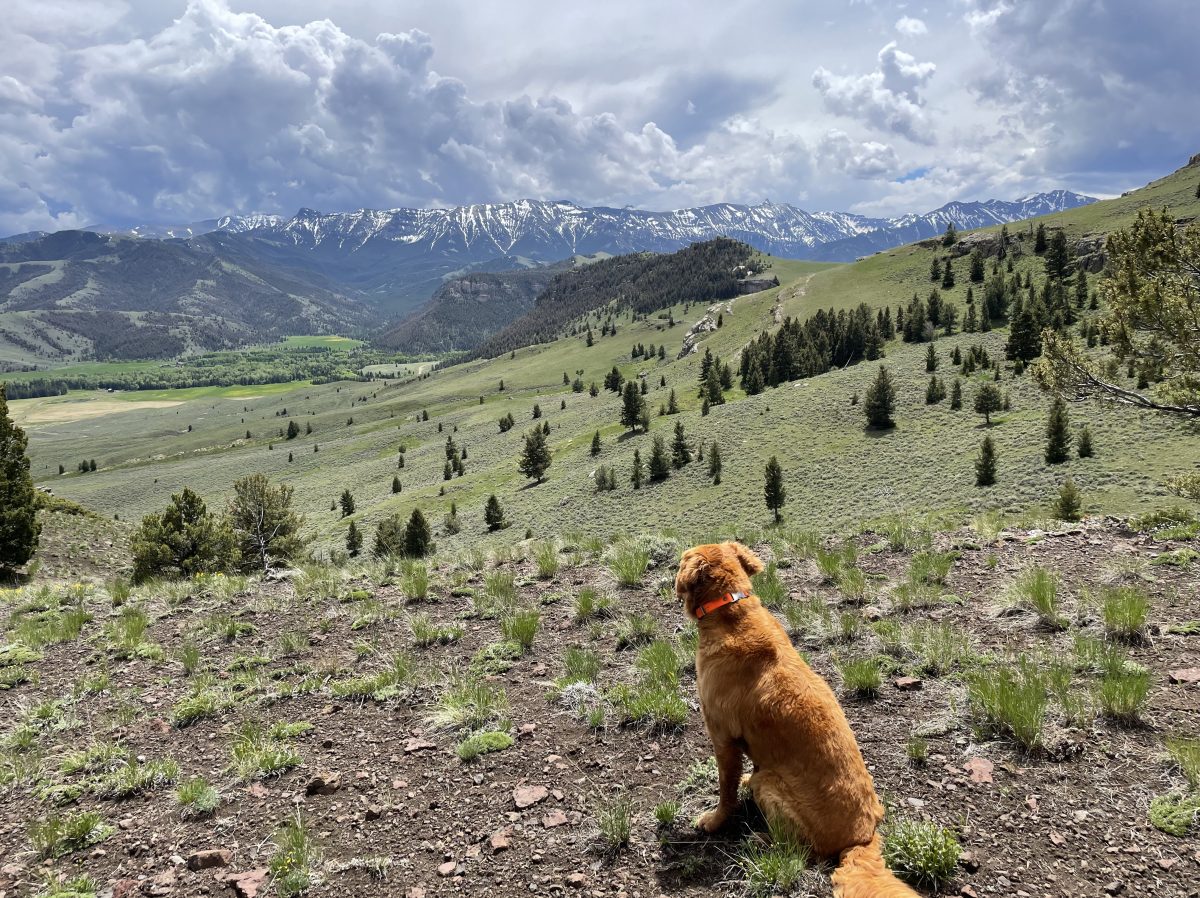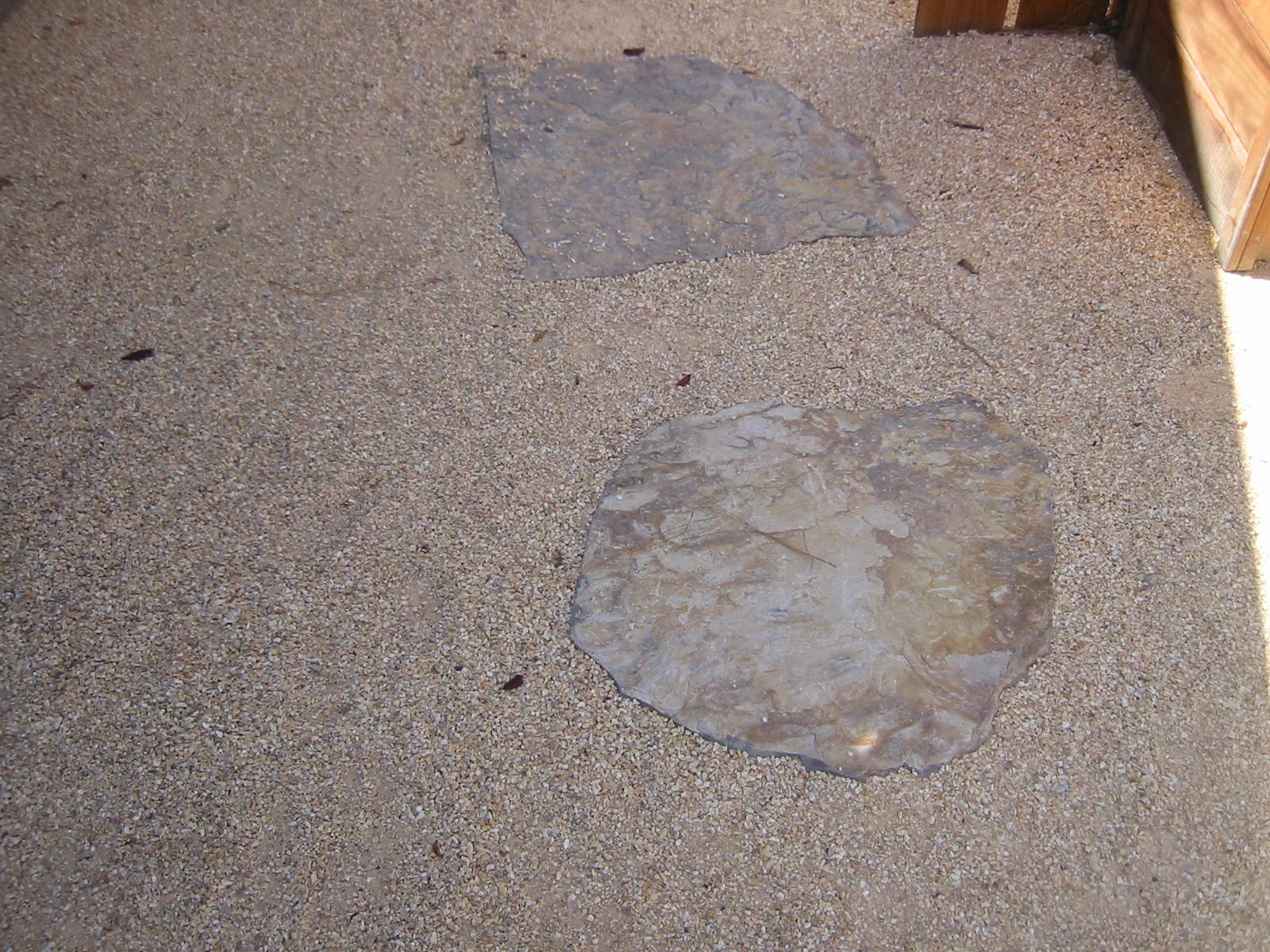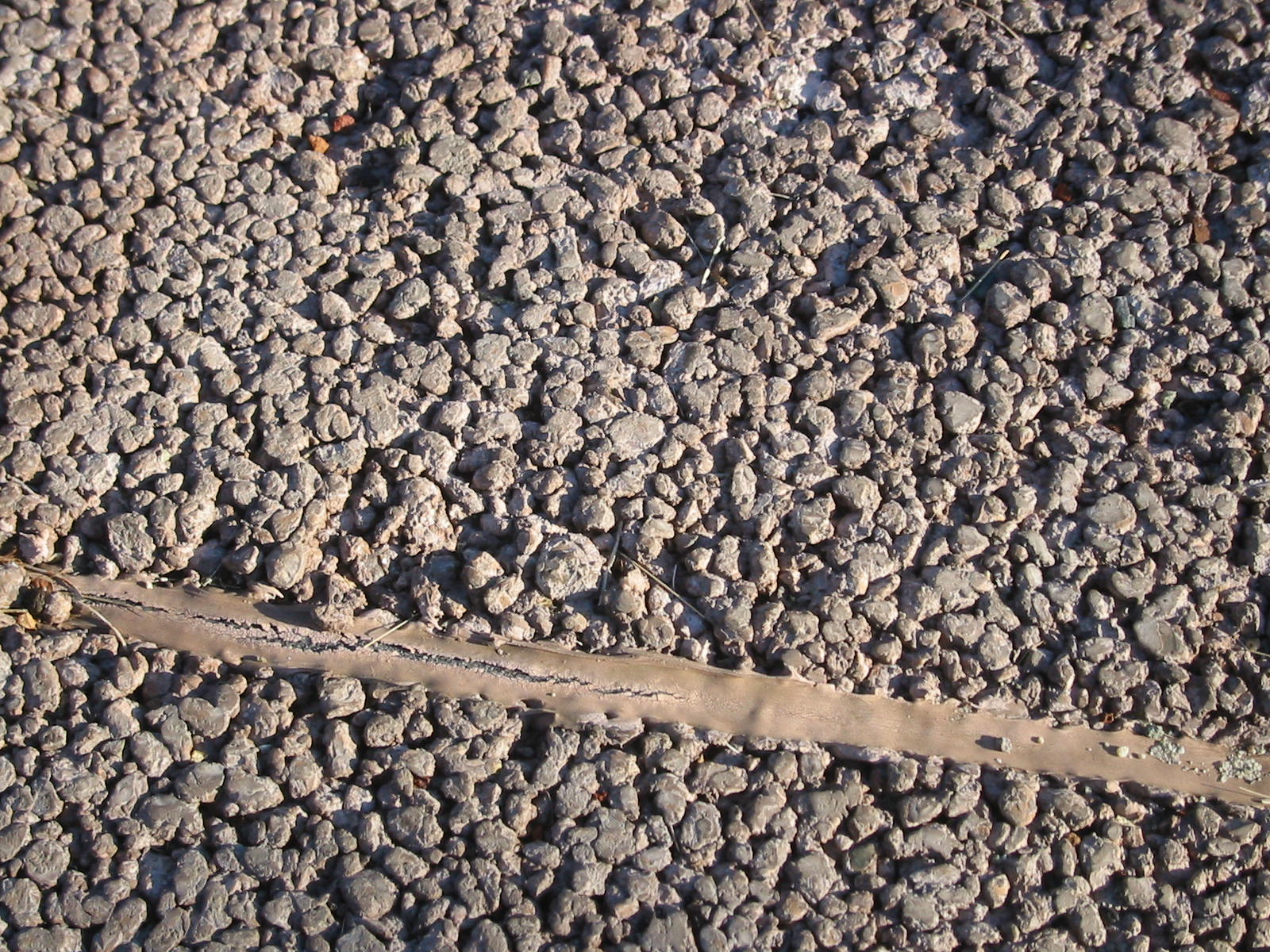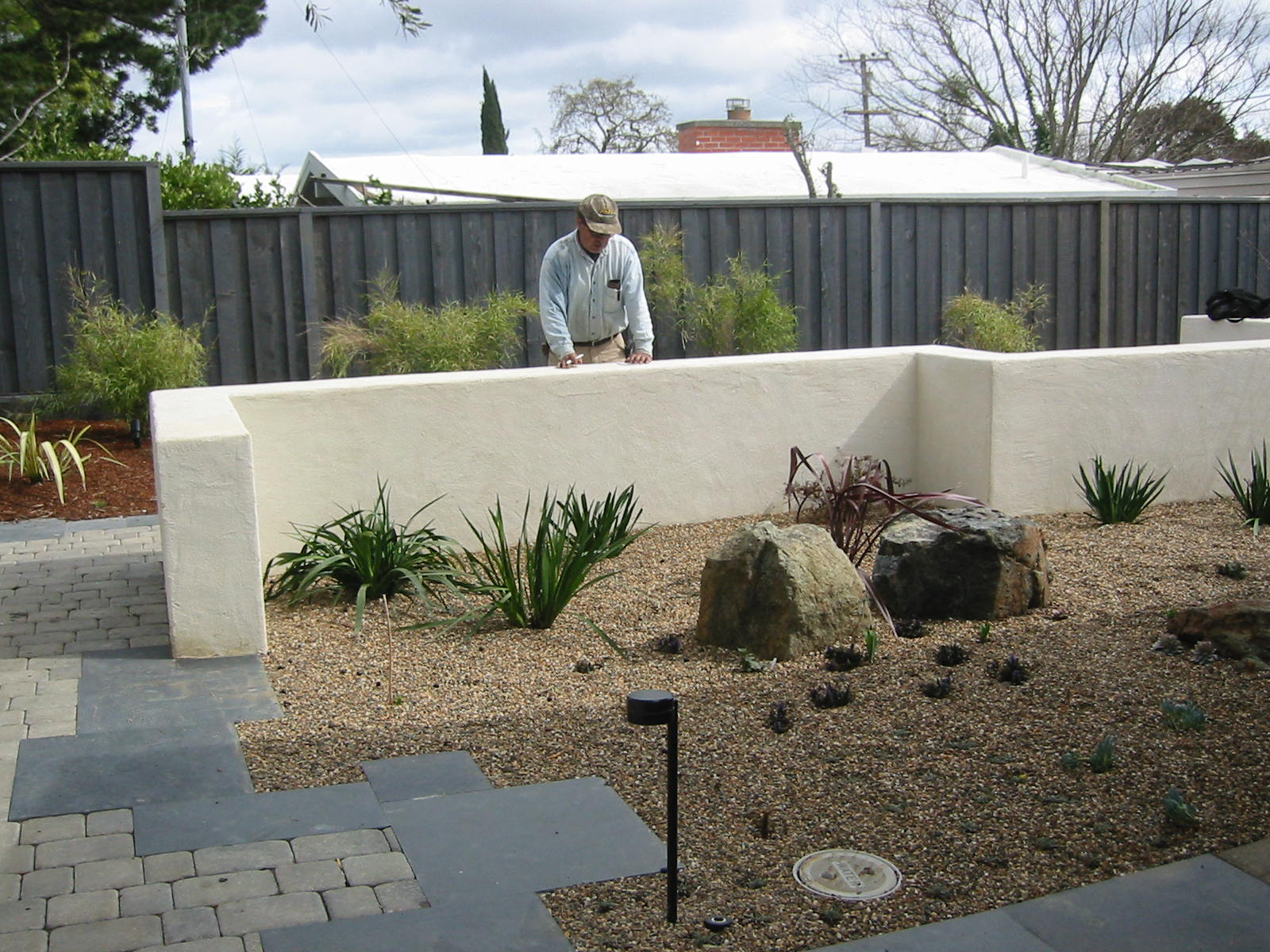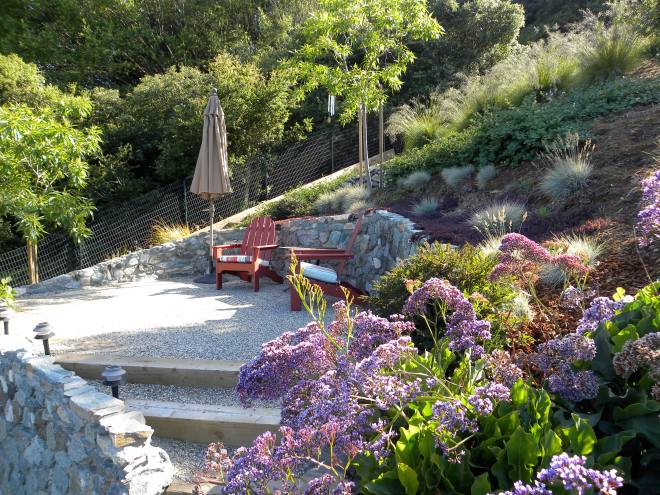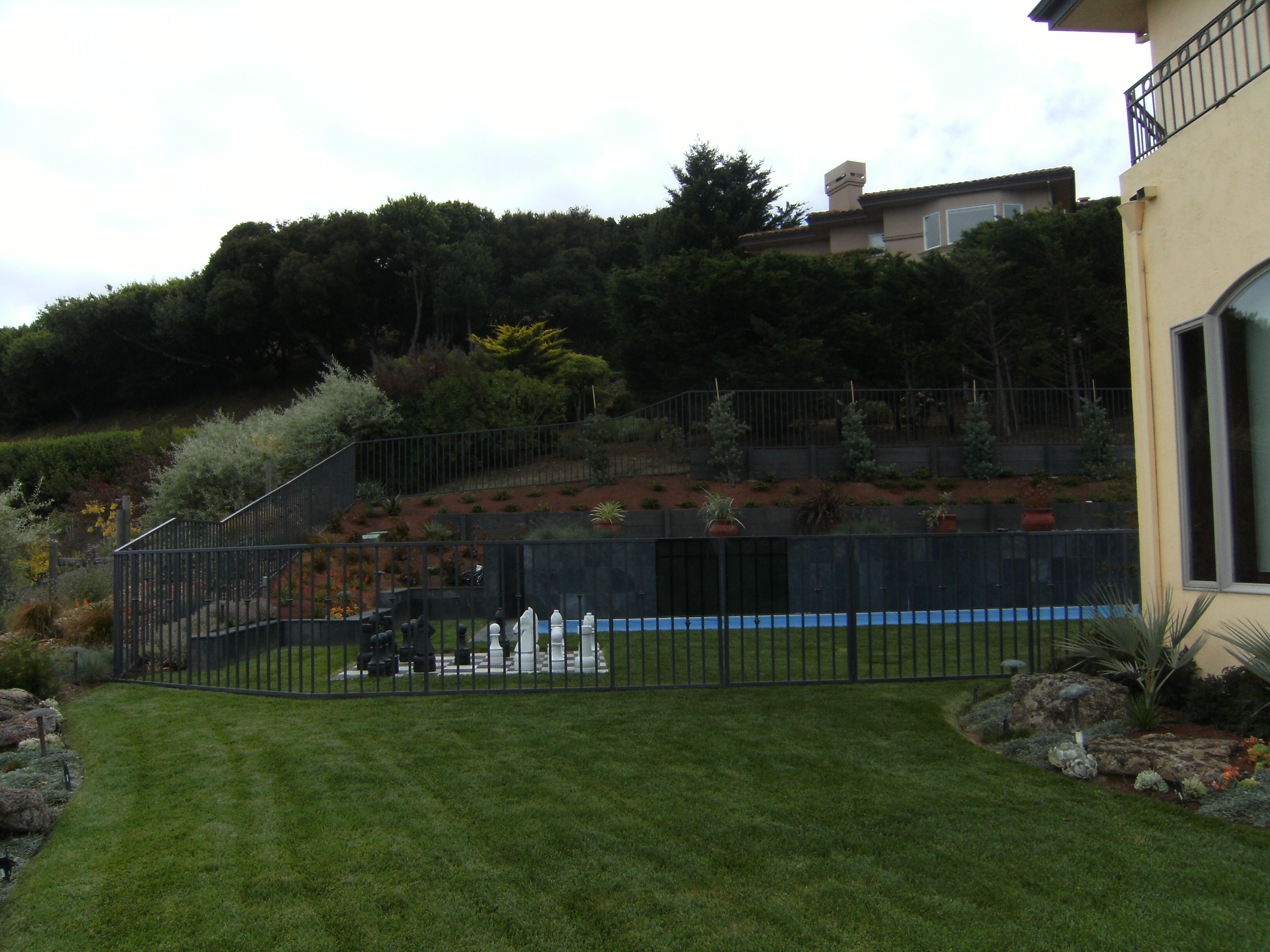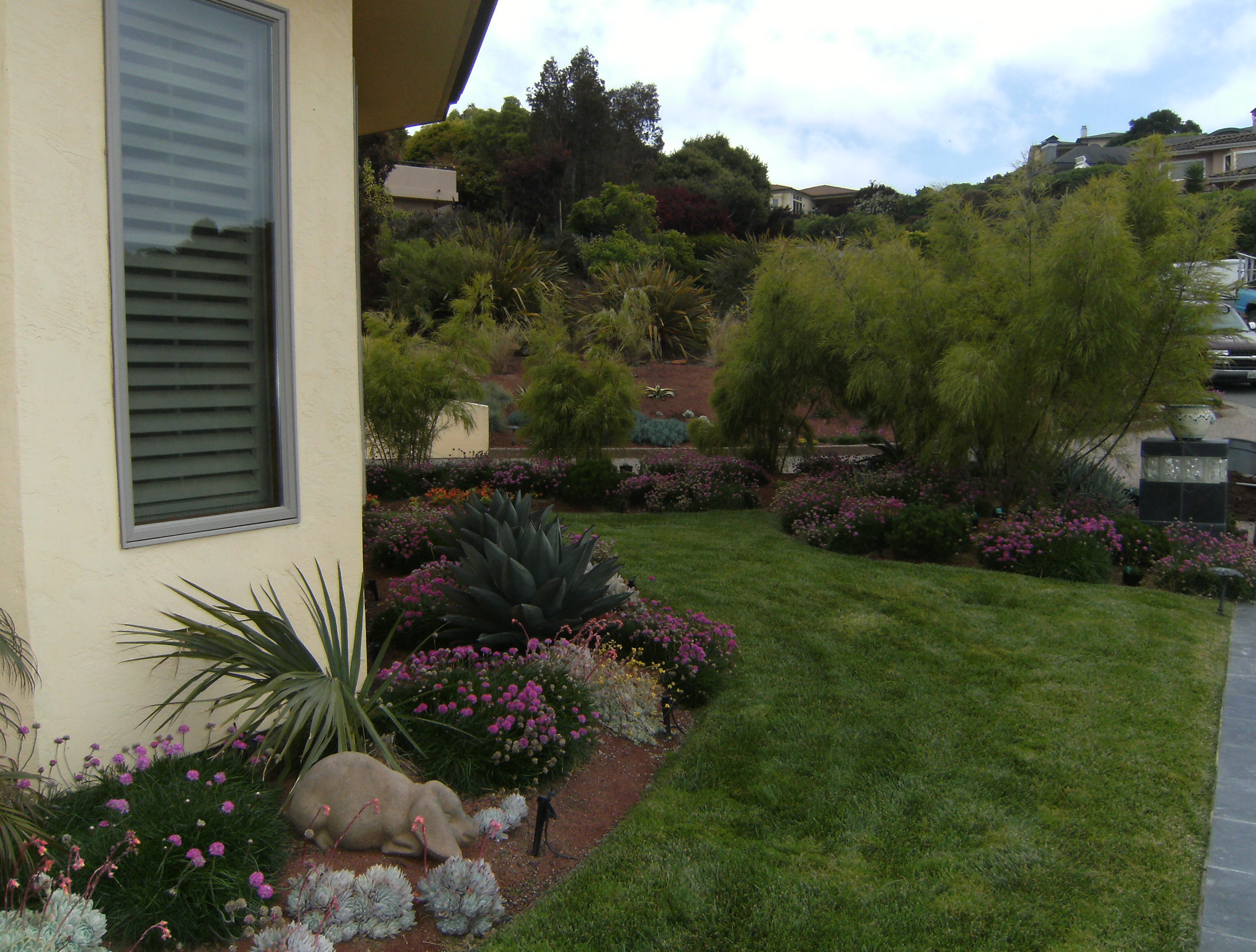Choosing and placing boulders for your landscape job is an art. The Japanese have several years of study on just rock placement. But you can do a great job with just some sensitivity and a good eye. Here are the basic tips.
I usually suggest choosing local or fairly local boulders. This keeps your costs down and usually blends in better with your yard. For instance, Sonoma Fieldstone in California costs approximately $125/ton vs. beautiful 3 Rivers rock, an Idaho import to California, at over $450/ton.
But sometimes you just fall in love with a type of rock and must have it. In that case accept you’ll be paying for it. Or maybe your area has junky looking local boulders. I suggest then to pass on them and spend the money for the nicer boulders.

So how do you choose and what is a nice boulder? First, no potato boulders! Second, look for lichen. Lichen grows extremely slow, something like 1″ every 10 years. Lots of lichen is good. Moss is easy to establish with a little water and buttermilk, so don’t necessarily choose boulders for the moss.
Every boulder came out of the ground and has a bottom and a top, a front and a back. The bottom won’t have any moss or lichen on it. Check as many sides as you can. Have the yard manager turn them over for you so you can see what each boulder looks like.
.That’s their job. Choose boulders that have a lot of interests such as pockets, unusual shapes (watch out for boulders that were broken during transport.
That is not an unusual shape), and usually I try to find a few boulders that have a natural water bowl that I can use for birds. I’ll put a hidden irrigation emitter behind the bowl so it stays full with each watering. Fourth, go for medium to large boulders.
The mistake everyone makes is putting in dinky rocks that disappear once the plants grow in. Remember, in order to look natural, you’ll be burying part of the boulder. Bigger is better, but unless you want to use a crane, make sure you have boulders that a crew of 4 or 5 guys can move.
That would be about 250-350 pounds/boulder in general. If your landscape is vast, you might need much larger boulders. If so, usually the yard rents a forklift with a driver for about $75-$100/hour which is worth it.

I usually choose a landscape yard that will deliver these boulders with a forklift no extra charge. Most of them do and for the price included in the delivery they will lift each boulder off their delivery truck, one by one, and place them near where you want them. That saves a lot of time for your crew.
Placing the boulders: First, consider your entire design and where you need to cluster boulders. Boulders should be placed in 3’s, 5’s, 7’s, etc. NEVER place boulders so they are in a row. This can happen inadvertently when you have a cluster in one location and one in another, then you’ll notice that three have been placed in a row. Move them in that case to offset the row.
As said before, boulders have a front and back. Consider where you’ll be seeing the boulder from. I usually like to place boulders of varying sizes together and I tend to triangulate the 3some’s and continue that style with larger groups. You NEVER want a LONELY boulder!

Your client, or if you are a homeowner, will look at all these boulders on bare ground and think they look huge or stand out too much. They don’t and they won’t once the plant material is in.

Placing the plants around the boulders: Of course, here you will consider your size of plants. I love for plants to peek out behind boulders, or have ground cover crawling over and in front of boulders. Usually your larger plants will be behind your boulders or alongside them.


Rock Seats: Finally, a few things to know about boulders for seating. First, boulders used as seating around a patio or in the garden are a wonderful addition to the garden. The natural height for a seat is somewhere between 16″-20″ tall.
Your desk chair usually runs 16″. The top must be flat with a good base that will be buried some in the ground. To place boulders in concrete around a pour, the boulder seat area must run 22″-25″, depending upon your final desired height. This is because at least 4-6″ will be embedded in the concrete.

Occasionally you’ll run across a boulder so fantastic, so unique, that you just have to have it and show it off. In that case, why not light it up. this jasper was just too delicious to pass up. It is imbedded in the concrete pour and you can see a light at its base that displays it.

